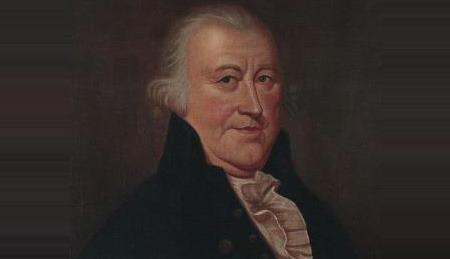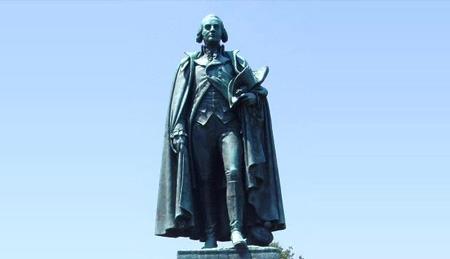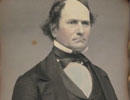General Artemas Ward was born on November 26, 1727 and lived most of his life in Shrewsbury, Massachusetts. On July 31, 1750 he married Sarah Trowbridge, daughter of Rev. Caleb Trowbridge and Hannah Walter of Groton, MA. Sarah was born December 3, 1724 and died in Shrewsbury on December 13, 1788. They had eight children.
General Ward

Ward attended the common schools, was prepared for college by a private tutor and graduated from Harvard College (B.A. 1748, M.A. 1751). Like his father, he held a prolific number of public offices at the town, county, and state level.
He was appointed Justice of the Peace in 1752, a representative in the Colonial General Assembly for many terms and in the executive council, Lieutenant Colonel in the Provincial Army in the French and Indian War and appointed Brigadier General by the Provincial Congress of Massachusetts on October 27, 1774.
As political crises brought on an American Revolution, Ward was made Commander in Chief of the Massachusetts forces on May 19, 1775, appointed by the Continental Congress to Major General on June 17, 1775 (second in seniority only to George Washington) and was in command of the forces besieging Boston until the arrival of Washington in Cambridge July 2, 1775.
The Battle of Bunker Hill occurred under Ward’s general command. The fortifying of Dorchester Heights with cannon brought from Fort Ticonderoga by General Henry Knox took place in the sector under Ward’s command in March, 1776.
Soon after the British evacuated Boston, Ward returned to civilian life where he served in demanding and important positions. He was Chief Justice of the Court of Common Pleas of Worcester County in 1776 and 1777. He served in the Massachusetts Senate as President of the Executive Council for about three years. In this capacity Ward functioned as Massachusetts’ chief executive during the war (1777-1779) in the office that replaced the Royal Governor no longer recognized.

He was a member of the Continental Congress from January 1780 to May 1782 when he resigned, and was later elected as a Federalist to the 2nd and 3rd Congresses (1791-1795).
He was elected Speaker of the Massachusetts House in 1786, which made his actions as a Justice of the Peace of the Worcester Court during the 1786 Shays’ Rebellion all the more significant. He faced down the rebels on the courthouse steps, demonstrating his popular influence and his respect for the rule of law.
In December of 1797 Ward concluded his long career as judge and spent his final years in quiet retirement at home with his family. He died on October 28, 1800 and is buried at Mountain View Cemetery in Shrewsbury Center.
On November 3, 1938 a bronze statue of General Ward was unveiled at Ward Circle, Washington, D.C. and stands at the intersection of Nebraska Avenue and Massachusetts Avenue. The sculptor, Leonard Crunelle of Chicago, modeled this portrait after an oil painting of Ward by Charles Wilson Peale. Crunelle also used the cape actually worn by Ward as a model. The sculpture and base each measure approximately 10 feet high by 5 feet wide by 4 feet deep. The stone base is inscribed “Artemas Ward, 1727-1800, Son of Massachusetts, Graduate of Harvard College, Judge and Legislator, Delegate 1780-1781 Continental Congress, Soldier in Three Wars, First Commander of the Patriotic Forces.”

 Major General Artemas Ward took the oath as commander-in-chief of the patriot army around Boston on May 20, 1775. Though initially the commander-in-chief, he relinquished command to General Washington on July 7, 1775 and served directly below him. Ward was actively...
Major General Artemas Ward took the oath as commander-in-chief of the patriot army around Boston on May 20, 1775. Though initially the commander-in-chief, he relinquished command to General Washington on July 7, 1775 and served directly below him. Ward was actively... Thomas Walter Jr died
Thomas Walter Jr died Elizabeth died
Elizabeth died